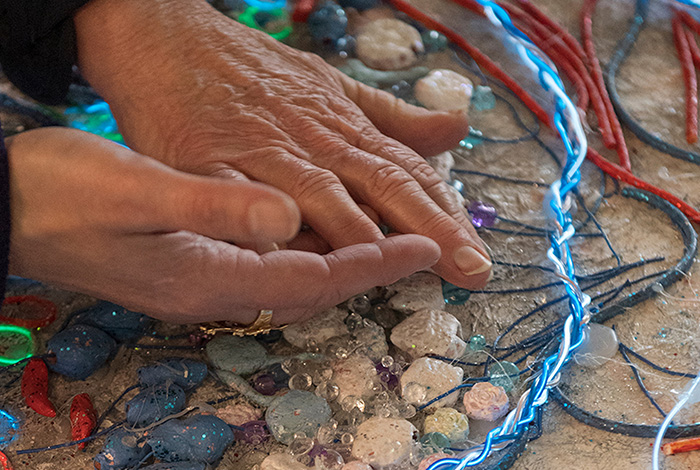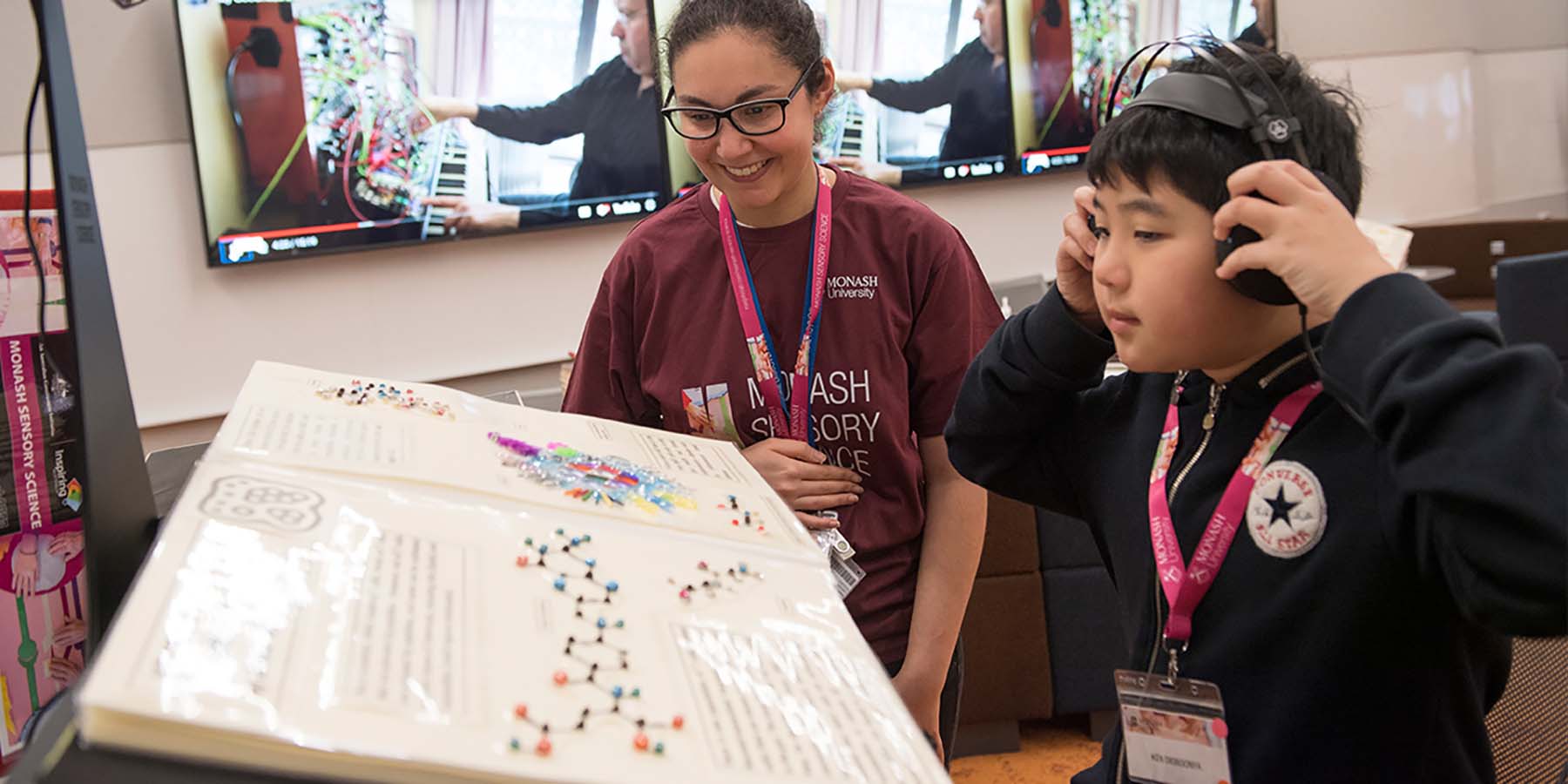Phase 1. Program Inception
In response a multisensory design strategy was formed. This centred on a residency program employing a legally blind artist/designer, Dr Erica Tandori. A talented artist and oil painter, Erica lost her vision at the aged 23 from Stargardt’s disease, a form of juvenile macular degeneration.
To gain a holistic overview of the laboratory, Erica first engaged the scientists in interviews to understand the salient outputs of their research. Next the scientists were engaged in co-creation workshops exploring tactile art-making, universal and inclusive design. This effort developed a wide range of tactile posters and artworks culminating in an inaugural exhibition staged in May 2018 attended by over 100 people.
Phase 2. Multisensory Exploration
Next an interaction design phase was employed exploring interaction and novel display technologies including sensors, Arduinos, LED displays, projection mappings, music and data sonifications of protein structures and immunology data. This work engaged the Swinburne IxD Lab and received funding from Creative Victoria. It was presented at the United Nations Symposium titled AI for Good in Geneva 2020.
During COVID lockdowns exhibitions shifted to online presentations. Co-creation activities developed a gallery of Journal front cover artworks. Dr Tandori published front covers for some of the world’s most prestigious scientific journals including Nature Immunology, Nature Cancer and the Journal of Experimental Medicine.
Phase 3. Multisensory Science Books
In response to COVID, a travelling exhibition concept was developed in the form of interactive multisensory science books. In this phase, scientists were invited to write about their research topics forming a narrative for tactile art and design. Large scale text, voiceover and braille labels were accompanied by electronic music works and data sonifications. Together with Swinburne IxD lab, innovative bookstands were developed housing webcams and Mac Mini computers to optically scan pages and fiducial markers for interaction.









